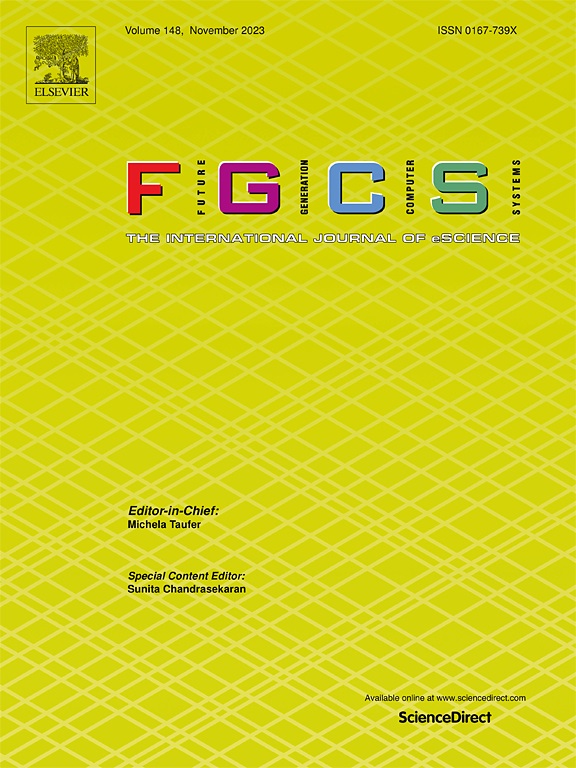利用小分区ZNS ssd的分区间并行性优化F2FS性能
IF 6.2
2区 计算机科学
Q1 COMPUTER SCIENCE, THEORY & METHODS
Future Generation Computer Systems-The International Journal of Escience
Pub Date : 2025-08-05
DOI:10.1016/j.future.2025.108044
引用次数: 0
摘要
ZNS ssd通常配备小区域,以提高空间利用率。然而,一个小区域被映射到有限数量的芯片,这导致芯片的有限并行性。此外,F2FS忽略了对区域间并行性的利用,导致无法充分利用ZNS SSD的芯片并行性。一方面,当工作负载的请求大小小于一个区域的请求大小时,很少使用区域间并行性。另一方面,区域间的干扰进一步限制了区域间并行度的利用。为了解决这些问题,本文提出了F2FS的全并行区分配和写入策略,称为FPZone。其核心思想是允许将F2FS的每个数据日志并行写入映射到不同芯片的多个区域,以提高区域间的并行性。首先,提出了一种并行区域分组方法,将映射到不同芯片上的区域划分为多个并行区域组。然后,给出了一种并行区域组分配方法,为不同热度的数据日志分配不同的并行区域组。然后设计并行分区组写机制,按照分区的条带大小为一个并行分区组中的多个分区分配空间,使一个请求可以并行写入多个分区。基于NVMe SSD仿真器(ConfZNS)的大量实验表明,与基准方案相比,FPZone可以有效地提高芯片利用率、I/O延迟和F2FS性能。本文章由计算机程序翻译,如有差异,请以英文原文为准。
Optimizing F2FS performance with the inter-zone parallelism in small-zone ZNS SSDs
ZNS SSDs are usually equipped with small zones to improve space utilization. However, a small zone is mapped to a limited number of chips, which results in a limited parallelism of the chips. Moreover, F2FS ignores the utilization of the inter-zone parallelism, resulting in an inability to fully utilize the chip parallelism of a ZNS SSD. On the one hand, inter-zone parallelism is rarely utilized when the request size of workloads is smaller than that of a zone. On the other hand, the inter-zone parallelism utilization is further limited by the inter-zone interference.
To address these issues, this paper proposes a full-parallelism zone allocation and writing strategy for F2FS, termed FPZone. The core idea is to allow each data log of F2FS to be written in parallel to multiple zones mapped to different chips to improve the inter-zone parallelism. First, a parallel zone grouping method is proposed to group zones mapped to different chips into multiple parallel zone groups. Then, a parallel zone group allocation method is given to allocate different parallel zone groups to data logs with different hotness. After that, a parallel zone group write mechanism is designed to allocate the space of multiple zones in a parallel zone group at the stripe size of a zone, allowing a request to be written to multiple zones in parallel. Extensive experiments based on an NVMe SSD emulator (ConfZNS) show FPZone can effectively improve the utilization of the chip, I/O latency and the performance of F2FS compared to the baseline scheme.
求助全文
通过发布文献求助,成功后即可免费获取论文全文。
去求助
来源期刊
CiteScore
19.90
自引率
2.70%
发文量
376
审稿时长
10.6 months
期刊介绍:
Computing infrastructures and systems are constantly evolving, resulting in increasingly complex and collaborative scientific applications. To cope with these advancements, there is a growing need for collaborative tools that can effectively map, control, and execute these applications.
Furthermore, with the explosion of Big Data, there is a requirement for innovative methods and infrastructures to collect, analyze, and derive meaningful insights from the vast amount of data generated. This necessitates the integration of computational and storage capabilities, databases, sensors, and human collaboration.
Future Generation Computer Systems aims to pioneer advancements in distributed systems, collaborative environments, high-performance computing, and Big Data analytics. It strives to stay at the forefront of developments in grids, clouds, and the Internet of Things (IoT) to effectively address the challenges posed by these wide-area, fully distributed sensing and computing systems.

 求助内容:
求助内容: 应助结果提醒方式:
应助结果提醒方式:


